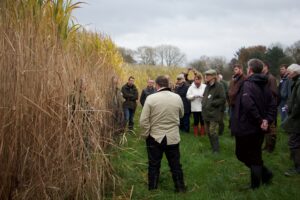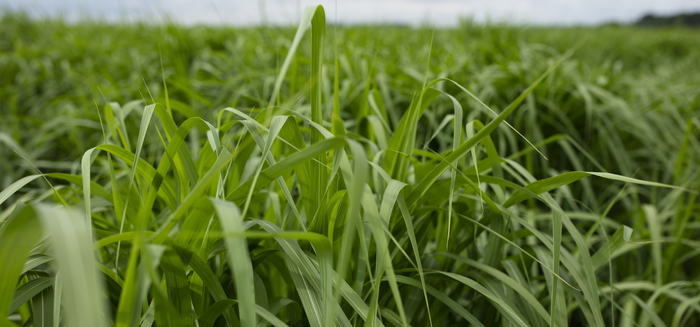More farmers are reaping long-term incomes and numerous environmental benefits from growing the perennial energy crop, Miscanthus.
Rob Meadley, an East Yorkshire farmer and Brown & Co agribusiness consultant, will showcase his Miscanthus crop to farmers interested in growing it on Thursday 21 September 2023, as well as giving a breakdown of the latest Sustainable Farming Incentive (SFI) updates.
Rob grows 12 hectares of Miscanthus on varying quality, outlying land that previously wasn’t delivering a viable return with arable crops.
His Miscanthus is 11 years old and after a difficult start where wet conditions followed planting, it’s showing a typical Miscanthus yield profile and good returns compared with other crops on the same soil type.
Rob believes Miscanthus is the right crop for this land and has not only met the budgeted return but has introduced additional ecological benefits to the farm.
“We’ve had a number of RSPB surveys done on the farm and the feedback was that they were genuinely surprised by the abundance and diversity of birds in and around the Miscanthus, including Curlews, rarely found in East Yorkshire,” explains Rob.
“We also saw breeding deer, brown hares and an abundance of invertebrates.”
Rob planted Miscanthus in March 2012 in good conditions, but this was followed by the wettest April on record, meaning the freshly planted crop was in standing

The farm walk is set for Thursday 21st September
water, and the bad weather hit again in June.
Rob explains that the 2014 harvest was affected by the legacy of flooding and lack of weed control. “Arable crops would never have survived the conditions that the Miscanthus was exposed to, and we didn’t lose any money on inputs. The annual yield quickly recovered, and in 2017 and 2020, we had bumper harvests of over 13t/ha.”
| 2012 | 2013 | 2014 | 2015 | 2016 | 2017 | 2018 | 2019 | 2020 | 2021 | 2022 | |
| Tonnage | – | – | 9.78 | 100.66 | 143.64 | 157.54 | 139.94 | 153.41 | 159.36 | 134.61 | 154.25 |
| Yield (Tonnes/ha) | – | – | 0.81 | 8.36 | 11.93 | 13.08 | 11.62 | 12.74 | 13.24 | 11.18 | 12.81 |
The Miscanthus area has allowed Rob to square off an arable crop next to it, and this field is two miles away from the farm, meaning the minimal maintenance required is a huge benefit. “The crop has also helped to naturally control blackgrass in that area,” says Rob.
Ultimately, Rob explains that there would not have been another option for a crop on that land that would have been as profitable. “Back in 2012 when we decided to plant Miscanthus, the principle was looking at the whole farm net margin and identifying the risk in this area.
“It wasn’t performing as well as other parts of the farm and Miscanthus was 100% the right decision for it. The only other option for that land would have been environmental grass, but Miscanthus beats this hands down from a net margin point of view.
“Miscanthus is a vitally important crop due to its soil carbon sequestration capabilities and positive ecological impact, and with the uncertainty around farm subsidies under the Environmental Land Management (ELM) model, it provides a long-term fixed price, reliable income,” adds Rob.
The Miscanthus farm walk in Driffield will run from 9.30-11:30 am. It will include a presentation from Miscanthus specialist, Terravesta, about growing, harvesting and selling Miscanthus, a breakdown of the latest Sustainable Farming Incentive (SFI) updates from Rob Meadley, agri consultant at Brown & Co, and a tour of the crop with the chance to ask questions.




